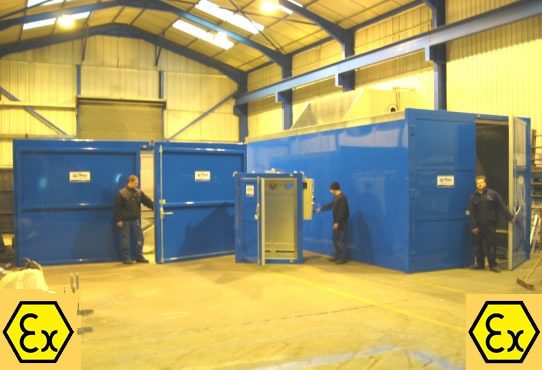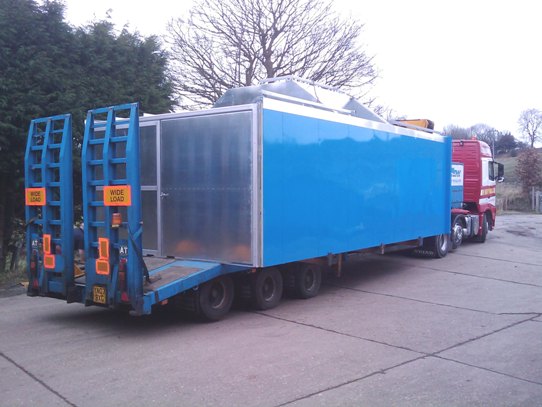ATEX Rated Industrial Ovens
The ATEX directive is two EU directives describing what equipment and work environment is allowed in an environment with an explosive atmosphere. At Airflow we have been manufacturing Industrial Explosive Atmosphere rated Ovens for many years.

As of July 2006, organisations in EU must follow the directives to protect employees from explosion risk in areas with explosive atmospheres. There are two ATEX directives (one for the manufacturer and one for the user of the equipment):
- The ATEX 95 equipment directive 94/9/EC, Equipment and protective systems intended for use in potentially explosive atmospheres;
- The ATEX 137 workplace directive 99/92/EC, Minimum requirements for improving the safety and health protection of workers potentially at risk from explosive atmospheres.
Call us in the UK on +44 (0) 1142 327788 to discuss your specific Atex rated Industrial Oven Specification or e-mail at
[email protected].
 Airflow Atex Rated Ovens Can be manufactured to resist Sources of Ignition
Airflow Atex Rated Ovens Can be manufactured to resist Sources of Ignition - Open Flames - This varies from a lit cigarette to welding activity.
- Mechanically Generated Impact Sparks - For example, a hammer blow on a rusty steel surface or a hammer blow on a flint stone. The speed and impact angle (between surface and speed direction) are important a 90 degree blow on a surface is relatively harmless.
- Mechanically Generated Friction Sparks - The combination of materials and speed determine the effectiveness of the ignition source. For example 4.5 m/s steel-steel friction with a force greater than 2 kN is an effective ignition source. The combination of aluminium and rust is also notoriously dangerous. More than one red hot spark is often necessary in order to have an effective ignition source.
- Electric Sparks - For example a bad electrical connection or a faulty pressure transmitter. The electric energy content of the spark determines the effectiveness of the ignition source.
- High Surface Temperature - This can be the result of milling, grinding, rubbing, mechanical friction in a stuffing box or bearing, or a hot liquid pumped into a vessel. For example the tip of a lathe cutting tool can easily be 600° Celsius (1100 °F).
- Electrostatic Discharge - Static electricity can be generated by air sliding over a wing, or a non-conductive liquid flowing through a filter screen.
- Radiation & Lightning Strikes - Rare but possible depending on your industrial sector.
- Adiabatic Compression - Air is pumped into a vessel and the vessel surface heats up.
- EExd and ATEX rated Industrial Ovens, are available in all configurations, which can be electrically, or steam heated to provide 'zoned compliance' for use within the chemical and petrochemical industries. Atex rated Conveyor Ovens, are available in a full range of temperatures with either flatbed, roller, overhead monorail or chain on edge conveyors.
If you found our website by typing in the following keywords then Airflow Group can design, manufacture, supply and install to your specifications.
- Atex Industry Directive
- Atex Oven
- Atex Ovens
- Atex Rated Baking Oven
- Atex Rated Batch Oven
- Atex Rated Box Oven
- Atex Rated Curing Oven
- Atex Rated Drum heating Oven
- Atex Rated Drying Oven
- Atex Rated Industrial Oven
- Atex Rated Paint Oven
- Atex Rated Powder Coating Oven
- Atex Rated Process Oven
- Atex Rated Sheet Heating Oven
Call us on
0114 2327788 to discuss your specific Industrial Atex Rated Ovens Specification or e-mail us on
[email protected].

